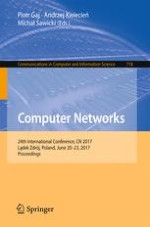2017 | Book
Computer Networks
24th International Conference, CN 2017, Lądek Zdrój, Poland, June 20–23, 2017, Proceedings
Editors: Piotr Gaj, Andrzej Kwiecień, Michał Sawicki
Publisher: Springer International Publishing
Book Series : Communications in Computer and Information Science
